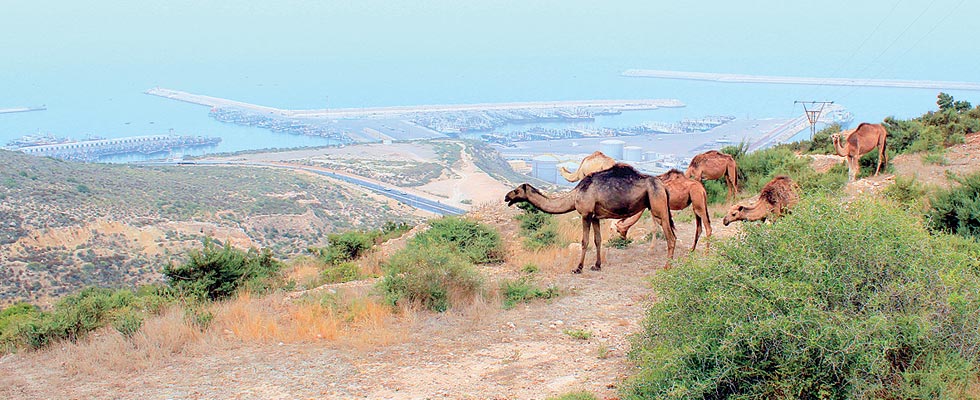
AT the time, I meant to present readers with some interesting data about a then recent holiday destination: the paradise holiday town of Agadir, in Morocco, in the far north-north west of Africa.
Opinion by Dusty Miller
But Africa Won Again!
Morocco was without a doubt the hardest place I’ve ever been to fight your way onto the internet. Having succeeded,often after hours of frustratingly trying, it’s rare you stay on line long, before the operation is timed out, or signal to server lost.
Mind you, on the plus side, the Wi-Fi is free wherever I went in Morocco.But I think I’d rather pay for a reasonable and reliable service!
In Egypt, at the Red Sea resort of Hurghada, just before the uprising against Mubarak), e-mail and internet connections cost 100 Egyptian pounds . . . around $10 . . . a day.
Dearest I’ve ever paid (and only to send out a major hard news story about a Somali pirate attack in the ship in which I was voyaging)was $30 for half an hour: the standard charge on cruise liners, with their (usually fuming, speechless) captive audiences, nowadays.
A Zimbo pal was totally horrified on booking out of a Dubai 4-star hotel to be hit with a bill for $720 for his niece’s interline bill for a three night stay. Now that is wrong.
- Chamisa under fire over US$120K donation
- Mavhunga puts DeMbare into Chibuku quarterfinals
- Pension funds bet on Cabora Bassa oilfields
- Councils defy govt fire tender directive
Keep Reading
Either provide a free service, or charge in advance so the client knows what the financial commitment is.
As dearly as I love my family, I can’t think how I’d react if my sister’s 17-year-old daughter ran up a $720 bill for me by constantly Skyping a boy she promptly dumped on returning to Ha-ha-ha-rare (Africa’s fun capital!) a week later!
I read somewhere Morocco is the most northerly country in Africa. It isn’t! Tunisia, where I also visited quite recently, lies much further north, stretching well into the Mediterranean Sea.
I’ve been round the most northerly vineyard in Africa in Tunisia (the wine was almost unbelievably awful!) and, coincidentally the most southerly, at Arniston Bay in the Cape, where the products were very drinkable.
Morocco is the nearest African country to the European mainland, with just a narrow strip of the Med separating Africa from Gibraltar, a disputed British possession linked to Spain at Algeciras. (Morocco has consistently refuse to join the OAU, or its successor, the African Union, but has asked to become a member of the European Union!)
I stayed at Agadir, an important seaside resort, harbour and fishing port on the Atlantic seaboard in southern Morocco.
It’s funny that as you go through life (I find), you’ve never heard of a place, person, book, piece of music, event or even word one day and . . . voila! . . . it crops up immediately afterwards.
I first learnt of Agadir at school as the scene of “the Morocco Incident” (in which the German Navy almost started World War I five or six years early!) in a history lesson. That very night, in 1960,I delivered hundreds of copies of ourlocal newspaper announcing the place had been almost totally destroyed by a terrible earthquake.
The tremor killed 15 000 people: about a third of the city’s population then and the King ordered the old place razed to avoid disease in the tropical climate at a sub-tropical latitude. I didn’t know about that aspect until I briefly managed to consult Dr Yahoo and Professor Google on the subject at the hotel.
And that was after I went unsuccessfully yomping around the Centre-Ville (Morocco, although a kingdom in the same dynasty for almost 1 000 years,was a colony of Spain and France for half-a-century) with my trusty Canon camera at the ready to capture images of venerable mosques, minarets, former slave markets and Foreign Legion-style fortresses.
Other than the indigenous population, the Carthaginians were first here; the Portuguese ruled from 1505 and Denmark gained the monopoly of its trade in 1751, but I was puzzled to find few if any buildings appeared older than me!
I now know that’s because hardly any of the original construction survived the earthquake; most of “new” Agadir was built at least five kilometres from the “old”. (Rather like the “new” Umtali {Mutare} was re-built several miles from the original settlement, when the line of the railway to Beira was confirmed as having to by-pass the first town, due to the mountains.)
What survived, here, was possibly Agadir’s most attractive architectural feature: the Kasbah, a veritable eyrie perched 236 metres above sea level.
Built in 1540 by Mohammed ech Cheikh as a starting point to launch his offensive against the Portuguese occupation and restored in 1752, it is a fine vantage point with a magnificent view of the sea and Agadir’s attractive beach: said to be the longest in Morocco. I was sorry to leave Agadir after a very relaxing fortnight’s beach holiday with seemingly endless hours spent swimming in the warm gentle (at this spot) Atlantic Ocean, but rural Oxfordshire and my gorgeous grand-children called.
If I could have seen far enough across the breakers from my hotel, I’d be looking at the Spanish Canary Islands nestling invitingly in the Atlantic Ocean.
But that’s according to one map I saw, which also told me Mauritania lay to the east of Morocco. According to another map displayed at the Gere Routers (long distance coach station) though, Algeria was actually the nation to the east and I tended to go with that version! What did we do before we could (sometimes!) call up Google Earth to check these things?
I can’t remember! If you can, let me know!
ldustym@zimind/co.zw











